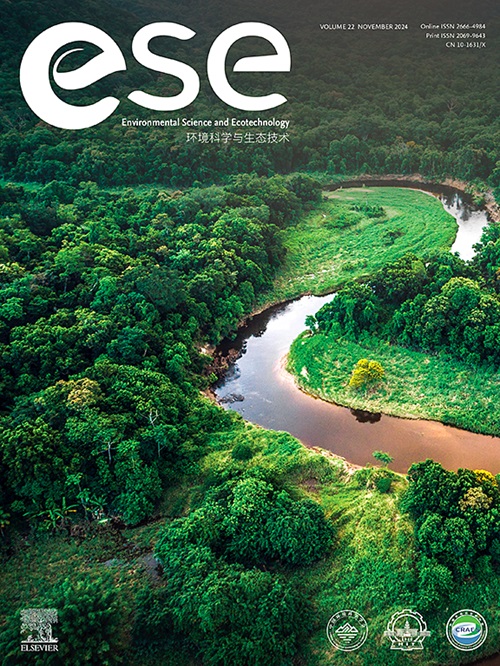Toward accurate and scalable rainfall estimation using surveillance camera data and a hybrid deep-learning framework
IF 14.3
1区 环境科学与生态学
Q1 ENVIRONMENTAL SCIENCES
引用次数: 0
Abstract
Rainfall measurement at high quality and spatiotemporal resolution is essential for urban hydrological modeling and effective stormwater management. However, traditional rainfall measurement methods face limitations regarding spatial coverage, temporal resolution, and data accessibility, particularly in urban settings. Here, we show a novel rainfall estimation framework that leverages surveillance cameras to enhance estimation accuracy and spatiotemporal data coverage. Our hybrid approach consists of two complementary modules: the first employs an image-quality signature technique to detect rain streaks from video frames and selects optimal regions of interest (ROIs). The second module integrates depthwise separable convolution (DSC) layers with gated recurrent units (GRU) in a regression model to accurately estimate rainfall intensity using these ROIs. We evaluate the framework using video data from two locations with distinct rainfall patterns and environmental conditions. The DSC–GRU model achieves high predictive performance, with coefficient of determination (R2) values ranging from 0.89 to 0.93 when validated against rain gauge measurements. Remarkably, the model maintains strong performance during daytime and nighttime conditions, outperforming existing video-based rainfall estimation methods and demonstrating robust adaptability across variable environmental scenarios. The model's lightweight architecture facilitates efficient training and deployment, enabling practical real-time urban rainfall monitoring. This work represents a substantial advancement in rainfall estimation technology, significantly reducing estimation errors and expanding measurement coverage, and provides a practical, low-cost solution for urban hydrological monitoring.

使用监控摄像头数据和混合深度学习框架进行准确和可扩展的降雨估计
高质量和高时空分辨率的降雨测量对于城市水文建模和有效的雨水管理至关重要。然而,传统的降雨测量方法在空间覆盖、时间分辨率和数据可及性方面存在局限性,特别是在城市环境中。在这里,我们展示了一种新的降雨估计框架,该框架利用监控摄像机来提高估计精度和时空数据覆盖率。我们的混合方法由两个互补的模块组成:第一个模块采用图像质量签名技术从视频帧中检测雨纹并选择最佳感兴趣区域(roi)。第二个模块将深度可分离卷积(DSC)层与门控循环单元(GRU)集成在回归模型中,以使用这些roi准确估计降雨强度。我们使用来自两个具有不同降雨模式和环境条件的地点的视频数据来评估该框架。DSC-GRU模型具有很高的预测性能,与雨量计测量值进行验证时,决定系数(R2)值在0.89至0.93之间。值得注意的是,该模型在白天和夜间条件下都保持了较强的性能,优于现有的基于视频的降雨估计方法,并展示了对各种环境情景的强大适应性。该模型的轻量级架构有助于有效的培训和部署,实现实际的实时城市降雨监测。这项工作代表了降雨估算技术的实质性进步,显著降低了估算误差,扩大了测量范围,为城市水文监测提供了一种实用、低成本的解决方案。
本文章由计算机程序翻译,如有差异,请以英文原文为准。
求助全文
约1分钟内获得全文
求助全文
来源期刊

Environmental Science and Ecotechnology
Multiple-
CiteScore
20.40
自引率
6.30%
发文量
11
审稿时长
18 days
期刊介绍:
Environmental Science & Ecotechnology (ESE) is an international, open-access journal publishing original research in environmental science, engineering, ecotechnology, and related fields. Authors publishing in ESE can immediately, permanently, and freely share their work. They have license options and retain copyright. Published by Elsevier, ESE is co-organized by the Chinese Society for Environmental Sciences, Harbin Institute of Technology, and the Chinese Research Academy of Environmental Sciences, under the supervision of the China Association for Science and Technology.
 求助内容:
求助内容: 应助结果提醒方式:
应助结果提醒方式:


